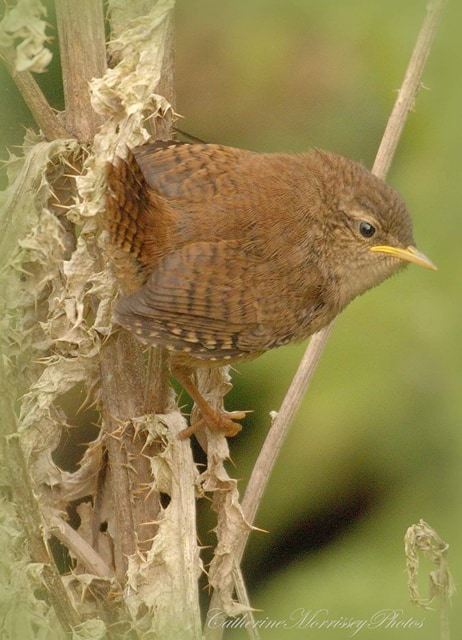-
The Wren is a member of the Troglodytidae family, meaning cave dweller. This is an apt name as they can often be found in cavities in buildings and trees.
-
There are other Wren species in North America, including the Bewick’s Wren, Carolina Wren and the House Wren.
-
The Eurasian Wren is the second-smallest bird in the U.K. and Ireland, larger only than the Goldcrest.
-
The Wren is the loudest bird in proportion to its size in Europe, and is the loudest bird of Britain and Ireland.
Various Wrens singing their hearts out. Nicola Lopez Photography.
-
It weights about as much as a £1 coin.
-
There are an estimated 8.6 million breeding pairs found in the U.K., and 4 million in Ireland.
-
Their average lifespan is between two to three years. The oldest recorded was six years and eight months.
-
Wrens are mainly sedentary, but British Wrens have been found in France. Their diminutive size makes them susceptible to extreme cold.
-
In particularly harsh winters, Wrens are less territorial, roosting communally. Up to ten Wrens can be found in a nest box at night, and up to sixty have been recorded as sharing a single box. They will use open-fronted and hole boxes.
-
In Greek mythology, the Wren was regarded as King of the Birds. It flew higher than all other birds by tricking the Eagle, by hiding on its back.
-
In Druid folklore, the Wren’s feather was thought to be a charm against disaster or drowning.
-
Cock Wrens sing all year round, except when moulting. There are two distint sounds – a sweet, very loud song which establishes his territory and attracts a mate, and a warning tick.
-
Cock Wrens are extremely territorial, except, as above, in extremely cold conditions.
-
The Wren nests mostly in coniferous forests, but has also adapted to living in hedgerows, farmland, heath land, orchards, coastal cliffs, mountains, off-shore islands, parks, and gardens.
-
The Wren feeds mainly on insects, eating the larvae as well as the fully-grown. For this reason, they won’t often be found feeding from bird tables.

This young Wren is keeping safe under cover. It is quite difficult to find them – you’re likely to hear them first. -
The Wren has a slightly curved bill for probing in tree trunks, and on the ground for insects.
-
Males establish a breeding territory in early spring.

Fledgling Wren. Thank you very much to Catherine Morrissey for allowing me use her beautiful photo. -
Cock Wrens build between six and seven – sometimes up to twelve – dome-shaped nests. The female lines the one she wants with moss, leaves and feathers. If she does not like the nest bases, or their territories, then she will build the nest herself.
-
Clutches are composed of six to eight eggs, and Wrens rear two broods per year, laying between April and June.
-
The female incubates the eggs and tends to the chicks in the nest. The male tends to the young by bringing them food and showing them where the roosting areas are in the evening.
-
Subscribe
Subscribed
Already have a WordPress.com account? Log in now.




